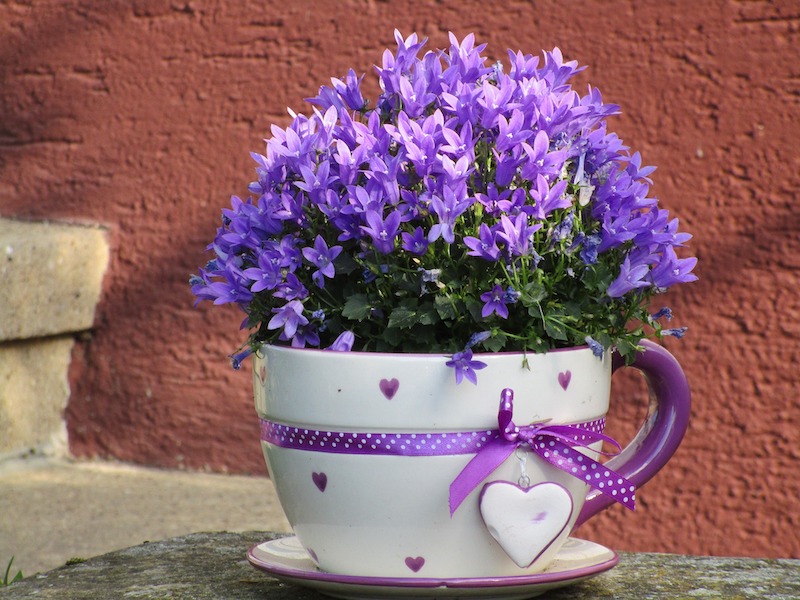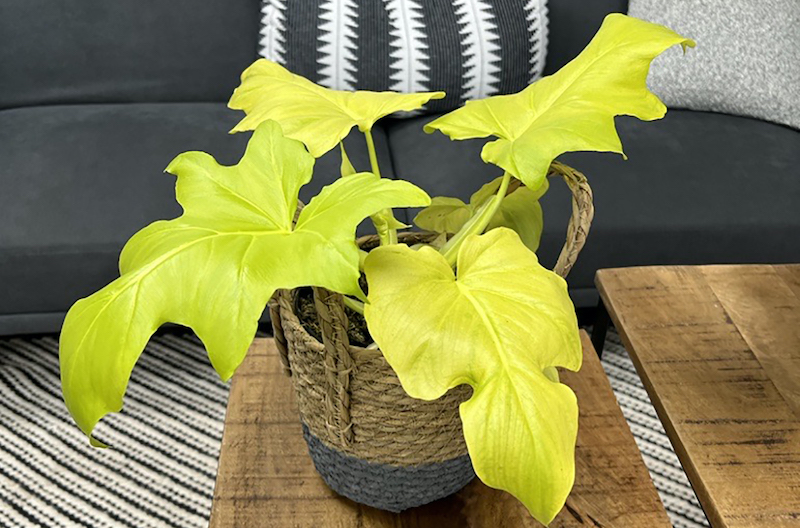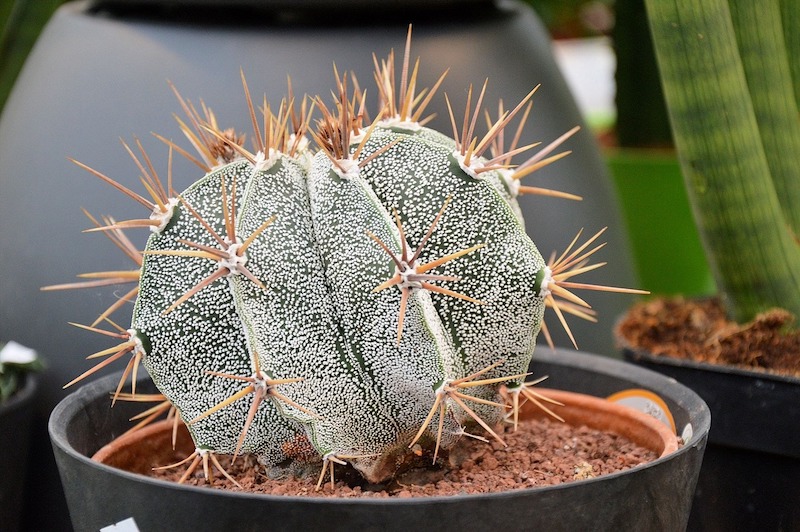Some containers may not have drainage for various reasons: appearance, protection of indoor spaces, or function for water-loving plants. For outdoor plants and flowers, some route allowing water to dissipate is typically needed, especially in a rainy climate. Controlling how much rain falls into your container is difficult, if not impossible. If you would like to use a container without drainage, we can give you some tips to keep you plant healthy and happy.

How To Use Planters With No Drainage Holes
If you have decided you want to plant your plants in a container that doesn’t have drainage holes, here are some things you can do. Our top recommendation is to use the planter as a cache pot to hide a plastic pot sleeve. To water with this setup, remove the insert from the decorative pot and water it over a sink or container. After it has drained, place the sleeve back in the cache pot, making sure to empty any water that collects at the bottom.

Another option is to create a water well in the bottom of the decorative pot. You’ll have to be very careful not to overwater because the roots can access the water that will inevitably pool at the bottom and may rot over time. Place small landscape rocks or pea gravel in the bottom of your chosen vessel, 1-3 inches deep, depending on the size of your container. On top of the rocks, but not completely covering them, add a thin layer of horticultural (or activated) charcoal. The charcoal allows water to drain through and into the rocks, helps absorb extra water, provides nutrients for the roots, and contains natural microbes that can help avoid bacterial and fungal issues. Add your soil and plant, gently firm that soil up, and then water your plant.
There is a large variety of other items people use to create drainage (and fill extra space in the bottom of a planter), including empty plastic water or soft drink bottles, styrofoam packing peanuts, pieces of broken terracotta pots, etc. We do not recommend these fillers as they can create a perched water table in the bottom layer of soil, slowing drainage, and leading to root rot over time.
How To Plug A Drainage Hole
If your pot has drainage holes and you don’t have (or don’t want) a saucer under it, you can do the following:
- Place a coffee filter in the bottom to slow water from draining and help keep the soil in the pot
- Place a sticker or duct tape over the hole, inside and out for extra protection
- Rubber or plastic stoppers of different sizes can be purchased to fit as a plug
- Fill the hole with clay or concrete
Why There Are Pots Without Drainage Holes
Some plants are planted in pots without drainage, simply because no drainage means less mess for retailers to deal with while staff water and care for a large number of plants. Some water-loving plants are planted in pots with poor drainage to mimic the boggy conditions of their native habitats. Many carnivorous plants require continuously wet soil and can be planted without drainage, although excess moisture can cause root disease over time. Decorative pots often have no escape route for water and are often intended to be used as a cachepot (a hiding place for another planter).
How to Grow Succulents In Pots Without Drainage
Good drainage is particularly important for succulents, as they do not tolerate wet soil. Succulents store water everywhere they can, leaves and stems, right down their roots. If they are sitting in water, it is a fast track to rot. Make sure to use a growing medium intended for succulents as well as provide good drainage for them, either by using decorative containers as cache pots or adding a drainage hole.

What to Do if A Planter is Not Draining
If your soil isn’t draining well, even in a pot or planter with drainage holes, it may be filled with heavy garden soil. Carefully remove the rootball and wash off the existing soil. Discard the old soil and repot in a container with potting soil or a potting mix. Studies have found that using a “potting mix” rather than regular soil, is beneficial to your plants. Potting mixes are actually soil-less and will contain materials such as coconut coir, vermiculite, perlite, and/or peat moss. These materials are lightweight and allow for water to easily travel through them and for air to flow, allowing for healthier roots. Though not quite as effective, but less expensive, coarse sand may be added to improve drainage also.
Plants That Grow Well In Planters Without Drainage
There are a number of plants that prefer wet or moist conditions and can do well in planters without any drainage. Care must still be taken not to overwater these types. Depending on where you live, most of these can be grown indoors, outdoors, or outdoors in the summer months and inside during the colder months of the year.
- Cordyline
- Oleander
- Schefflera
- Zamioculcas zamiifolia (Zz Plant)
- Pothos
- Dieffenbachia
- Spider plants
- Horsetail Reed
 |
Author Chris Link - Published 3-03-2023 |
